This small island nation goes way beyond natural beauty.
Over the past decade, tourism in Iceland has exploded. And the northern Nordic nation is now more popular than ever. You’ve probably seen pictures of Reykjavik’s famous Blue Lagoon on the Instagram page of someone you know. This attraction is actually man-made. It was formed by water released from a geothermal power plant, which never seeped back into the earth as they expected it to.
Beyond the Blue Lagoon, there are countless natural, totally unique wonders packed into this small island nation that is only about the size of Kentucky. And most of these incredible features of nature were formed by two things: volcanic activity and glaciers.
Here’s a look at some of the best sights and experiences Iceland has to offer—and how you can enjoy them:
Formed by Volcanoes:
Iceland is home to around 130 volcanoes—and many of them are still active!
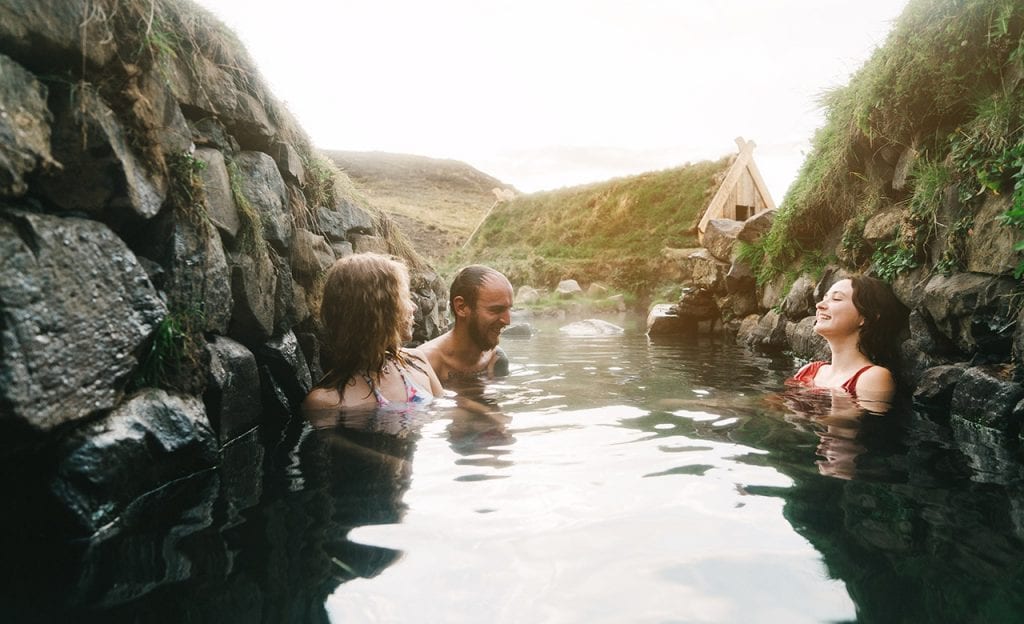
Hot springs
Volcanic activity throughout the island means underground heat has a huge impact on the land and water (most of the country is powered by clean geothermal energy). Hot springs are basically everywhere, so come prepared to take a soak! They range from rustic settings in the wilderness to well-maintained pools with all the amenities in urban centers. Take your pick!
Where to find: throughout the country, but many are within reach of Reykjavik.
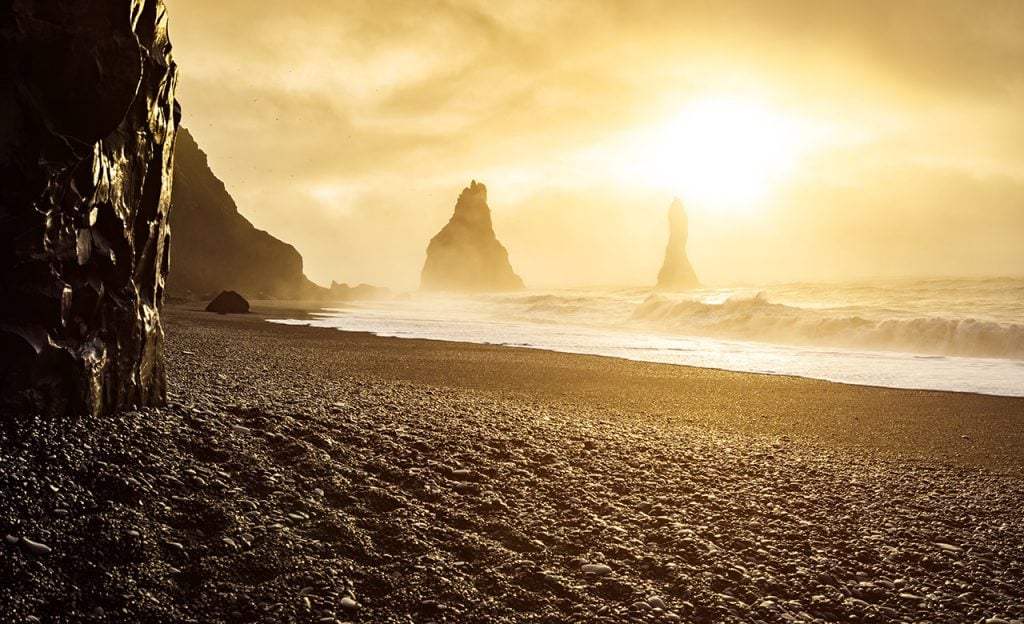
Black sand beaches
You’ve never seen beaches like these before (unless you’ve already been to Iceland)! This curious black sand was formed from volcanic eruptions. When molten lava mixed with the cold water of the north Atlantic ocean, it turned black and broke into tiny parts, which you can walk over today.
Reynisfjara black sand beach is one of the most famous. It features “sea stacks,” or ballast columns jutting out of the waves nearby.
Where to find: on the south coast.
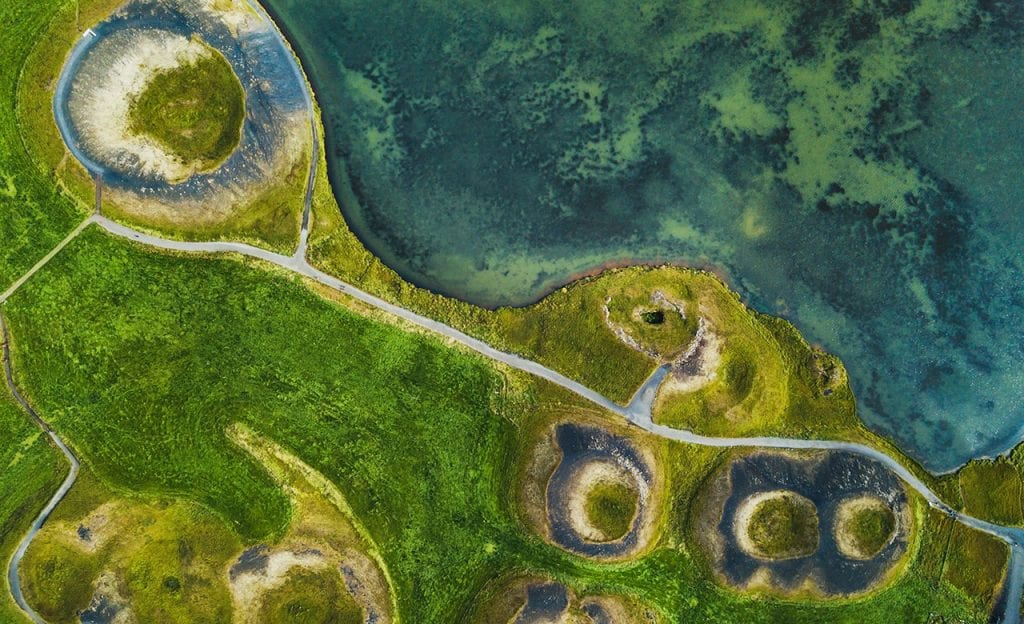
Craters and “lunar landscapes”
Going to Iceland can feel like you’ve stepped off the earth and onto the moon. There are large craters throughout the country—dramatic additions to the landscape. When a thin layer of molten lava flowed over a wetland, it boiled the water, built up pressure, and caused a steam explosion! You can (safely) walk into some of these craters today. Another great way to see them? Looking down from a helicopter!
Where to find: near Grundarfjordur and Reykjavik in the west, and Akureyri up north.
Created by Glaciers:
Iceland is sometimes included as part of Scandinavia, depending on who you ask. One big thing it shares with other Scandinavian countries (especially Norway) is a land shaped by glaciers.
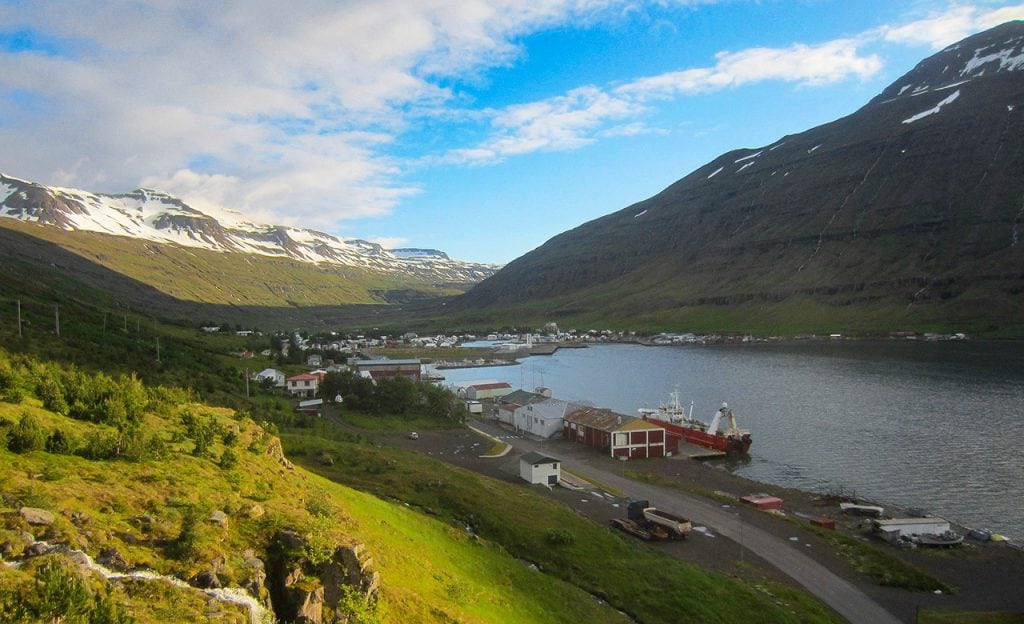
Fjords
Fjords are long narrow inlets that extend inland from the open ocean. Most fjords were formed by glacial movement long, long ago. Iceland has many fjords along the western and northern coasts that offer beautiful views out to sea. Eyjafjörður is one of the largest fjords in the north of Iceland that sits between sharp mountain ranges and open valleys.
Where to find: near Grundarfjordur and the city of Akureyri.
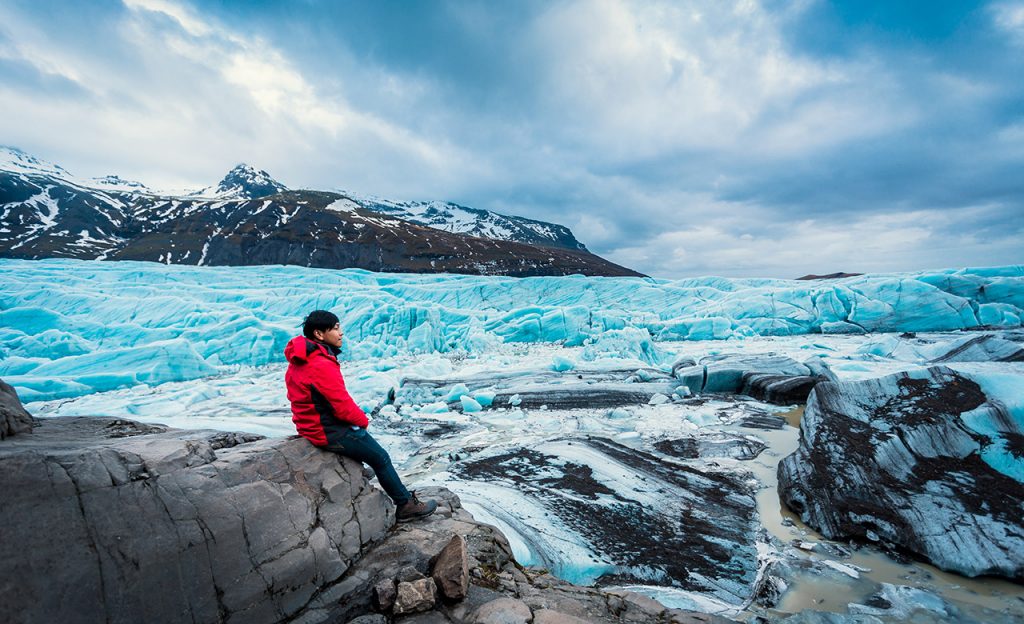
Ice sheets:
As the name suggests, Iceland has ice. Getting up close to the remaining ice sheets is another otherworldly experience you have to see. Flying over parts of the country will let you appreciate the size and scale, especially Vatnajökull glacier, which is the largest ice sheet in Europe!
Where to find: inland from Reykjavik near Akureyri, and in Vatnajökull National Park.
